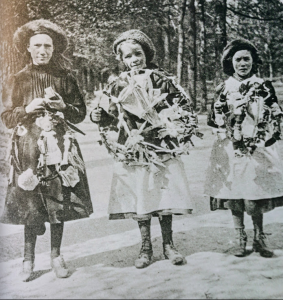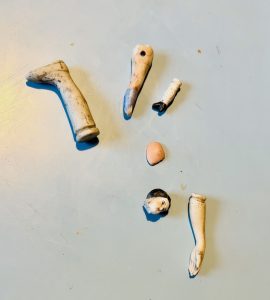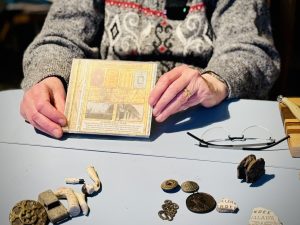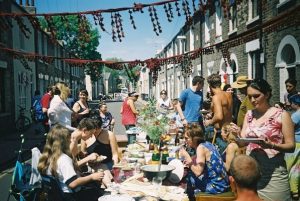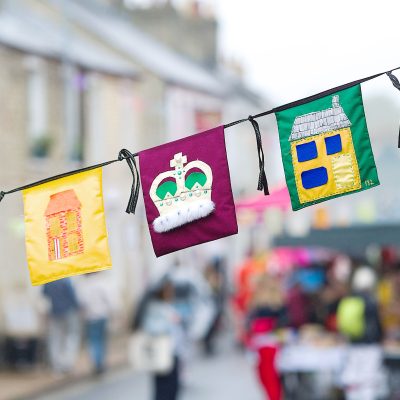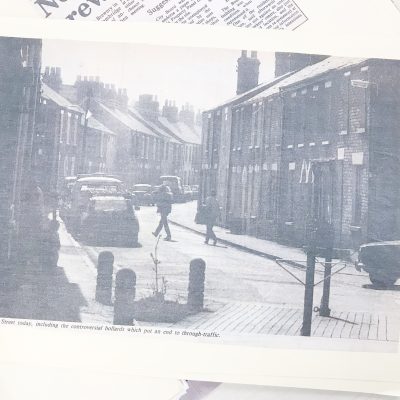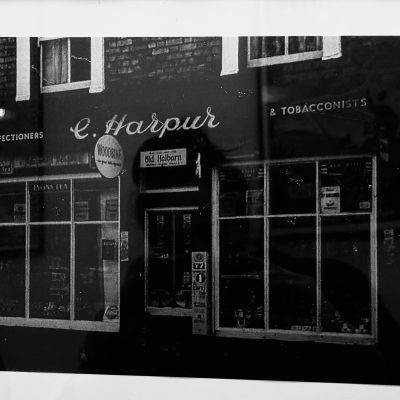Search by topic
- archaeology
- Building of Local Interest
- chapel
- charity
- church
- crime
- dressmaker
- fire
- Great Eastern Railway
- Listed building
- Mapping Relief
- medieval
- oral history
- poverty
- Public House
- Religious House
- Roman
- scholar
- school
- Then and Now
- tudor
- women
- work
- world war one
- world war two
Search by text
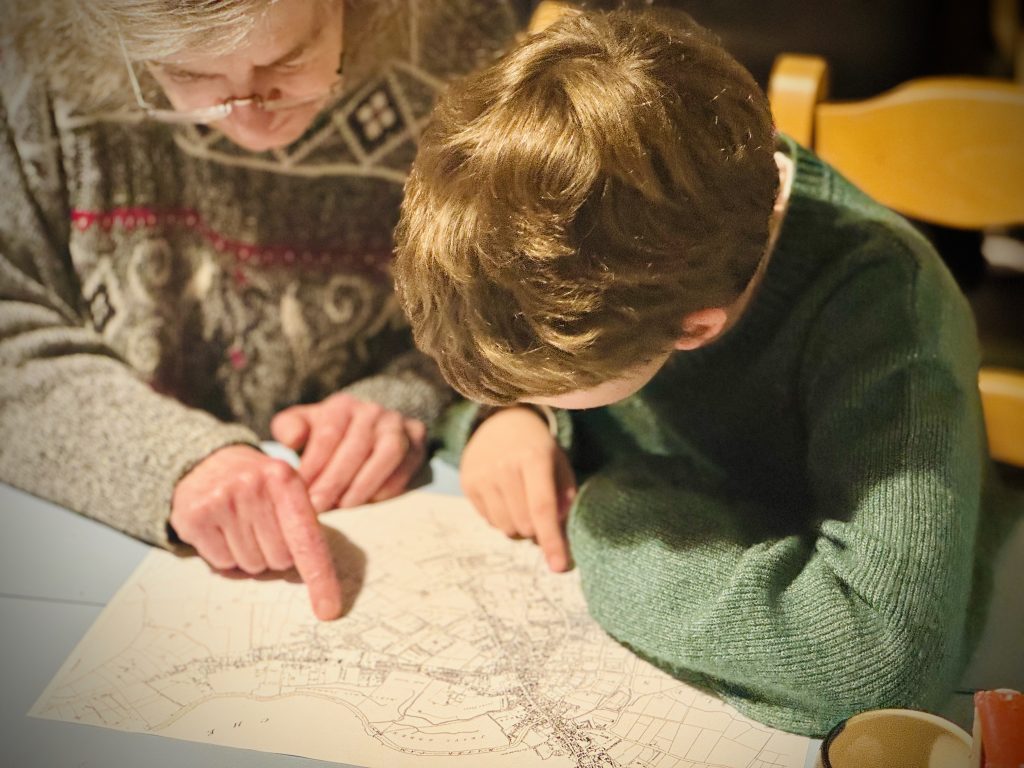 Gwydir Street residents Jo and Nathaniel look at a map of Cambridge together, 2024
Gwydir Street residents Jo and Nathaniel look at a map of Cambridge together, 2024Jo – Gwydir Street
In conversation with Nathaniel
Jo created a website documenting Gwydir Street and the local area. She and her partner Keith worked as computer programmers including at IBM in the 1970’s and at Pye electronics. Her neighbour Nathaniel is 10 years old and has grown up on the street. He helps curate Jo’s window displays and has been undertaking a research project at school about the Victorian residents on Gwydir Street.
Growing up in the 1950’s
Childhood favourites
Computers and websites
Gwydir Street stories

Vicarage Terrace after two HE bombs were dropped in June 1940 (Cambridgeshire Collection)
Historical events
Moving to Gwydir Street

Gwydir Street’s “controversial” bollards feature in a 1982 news article. Image courtesy Cambridgeshire Collection.
Street parties
Neighbours and community

Sara Payne visits Gwydir Street in this Down Your Street feature for Cambridge Evening News, 1982.04.08. Image courtesy Cambridgeshire Collection

Pye Radio, St Andrew’s Street, Chesterton, 1933
“In 1971 I revisited my old school after spending six months working for IBM as a computer programmer, and my headmistress asked me what computers actually did. I was shocked at her ignorance, but that attitude was common. People knew the things existed but had no contact with them themselves. Still I was working as a commercial programmer, I knew about mainframes (big computers), minis (small computers) and micros (tiny computers). They stored data on open reel tapes and dismountable disks. The computers were kept in special air conditioned rooms, and we were not allowed in. We had to type our programs on paper tape or punched cards, and got back the result on printed paper. When I started, the turn-round (from handing over the punched cards to the operators to feed into the computer, to getting the results back) was often a whole day! By the early 1980’s, there were some cheap micros available, and Margaret Thatcher had the aim to have one computer in every school in Britain. Those that could afford it would get a BBC computer, otherwise they would have a ZX81. (Both these were very slow and could hardly do anything.) There was certainly several years when the joke that an eight year child knew more about computers than an adult was uncomfortably near the truth. Some people got computers for the games, others for word processing. The BBC computer originally stored its programs on cassette tapes, which was painfully slow and unreliable. Then there were the original floppy disks, in square black card cases, 5 and a quarter inch. They were called floppy disks for a reason – a joke ran that someone sent a floppy disk through the post with “floppy disk do not bend” written on it. When it arrived, someone had added “Oh yes they do!” These were replaced by 3 and a half inch disks, in robust plastic covers of various colours. As I explained to my mother, they were called floppy disk because they weren’t floppy and they weren’t round (but they were inside, of course). If you want to know what this type of disk looked like, its picture is still used as an icon for ‘Save file’ in most software. By now, PCs and Microsoft had arrived, and there were more and more computers around. Once the internet started, suddenly in a couple of years we seemed to go from expecting people not to know about computers to expecting people to own one, have an email address and shop online! Meanwhile, data went onto CDs, then DVDs, then USB sticks, and data was transferred through email as well. Now we have the Cloud.” – Jo writes about words and terms that no longer exist here.
Contribute
Do you have any information about the people or places in this article? If so, then please let us know using the Contact page or by emailing capturingcambridge@
License
This work is licensed under CC BY-NC-SA 4.0





